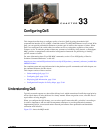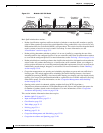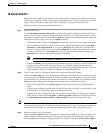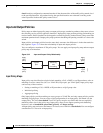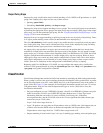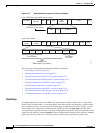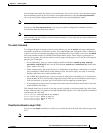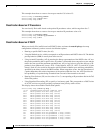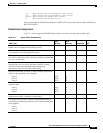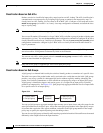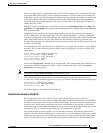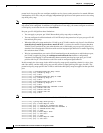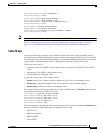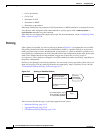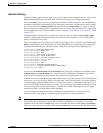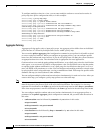
33-9
Cisco ME 3400 Ethernet Access Switch Software Configuration Guide
OL-9639-06
Chapter 33 Configuring QoS
Understanding QoS
cs6 Match packets with CS6(precedence 6) dscp (110000)
cs7 Match packets with CS7(precedence 7) dscp (111000)
default Match packets with default dscp (000000)
ef Match packets with EF dscp (101110)
For more information on DSCP prioritization, see RFC-2597 (AF per-hop behavior), RFC-2598 (EF), or
RFC-2475 (DSCP).
Classification Comparisons
Table 33-1 shows suggested IP DSCP, IP precedence, and CoS values for typical traffic types:
Ta ble 33-1 Typical Traffic Classifications
Traffic Type
DSCP
per-hop
DSCP
(decimal)
IP
Precedence
CoS
Voice-bearer—traffic in a priority queue or the queue with the
highest service weight and lowest drop priority.
EF 46 5 5
Voice control—signalling traffic, related to call setup, from a
voice gateway or a voice application server.
AF31 26 3 3
Video conferencing—in most networks, video conferencing
over IP has similar loss, delay, and delay variation requirements
as voice over IP traffic.
AF41 34 4 4
Streaming video—relatively high bandwidth applications with a
high tolerance for loss, delay, and delay variation. Usually
considered more important than regular background
applications such as e-mail and web browsing.
AF13 14 1 1
Mission critical date (gold data)—delay-sensitive applications
critical to the operation of an enterprise.
Level 1
Level 2
Level 3
AF21
AF22
AF23
18
20
22
2
2
2
2
2
2
Less critical data (silver data)—noncritical, but relatively
important data.
Level 1
Level 2
Level 3
AF11
AF12
AF13
10
12
14
1
1
1
1
1
1
Best-effort data (bronze data)—other traffic, including all
noninteractive traffic, regardless of importance.
Default 0 0 0
Less than best-effort data—noncritical, bandwidth-intensive
data traffic given the least preference. This is the first traffic type
to be dropped.
Level 1
Level 2
Level 3
2
4
6
0
0
0
0
0
0



